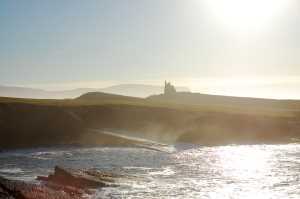 Mullaghmore Head in County Sligo is a very popular water sports and seaside destination as well as a stop on the Wild Atlantic Way.
Mullaghmore Head in County Sligo is a very popular water sports and seaside destination as well as a stop on the Wild Atlantic Way.
Located in the north west of Ireland, between Grange and Bundoram along the N15, the promontory that makes up Mullaghmore is all about the sea. Set close to the borders of County Leitrim and Donegal, it’s an impressive setting with uninterrupted views of Benbulben Mountain, Donegal and Sligo Bay.
With 3km of lovely golden beaches, lots of rugged coastline, little bays, rocky outcroppings, coves and lovely clear water, it’s no wonder it’s a mecca for water sports enthusiasts.
The west coast of Ireland is an exceptionally popular destination for surfers and Bundoram is at the centre of that. The geography of Mullaghmore Head gives it the “prowler” a unique wave type that has been said to reach over 100ft up to several miles off the coast.
This brought Ireland it’s first Big Wave contest in 2011 which saw surfers from across the world compete here. Earlier this year, pro surfer Kirt Rist rode a 55ft prowler wave over a mile off the shore of Mullaghmore Head. If you love the surf, this is the place to be!
Mullaghmore also offers a range of other activities too, from fishing, scuba diving, snorkelling, boat trips and walks along the cliffs. Of course, being part of the Wild Atlantic Way means there are lots of paths and defined coastal walks for you to enjoy while you’re here.
The village of Mullaghmore itself was once owned by Lord Palmerston who was Master of the Rolls in Dublin. He was granted 12,000 acres of land in the area and built Classiebawn Castle on the peninsula. He also brought in immigrants from Liverpool to work the land and build a community. The village of Mullaghmore was created and a harbour built to service it.
Classiebawn Castle was passed down the generations until it was given to Lord Mountbatten before he was killed off the coast of Mullaghmore in 1979.
The village and harbour have prospered thanks to tourism and local industry. The harbour is still busy, local fare, arts and crafts are still sold locally and nationally too. It’s a typical Irish village that would be worth a visit even if it wasn’t part of the Wild Atlantic Way!
